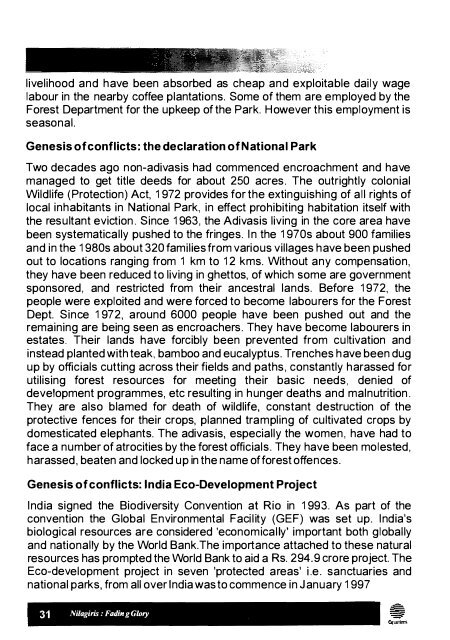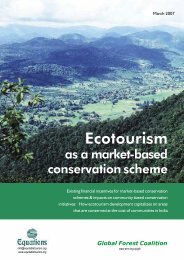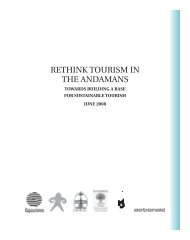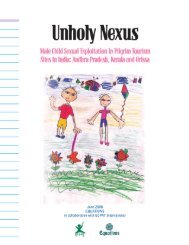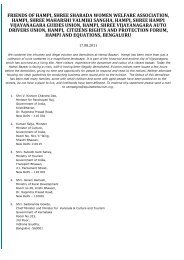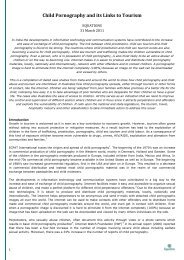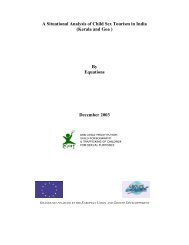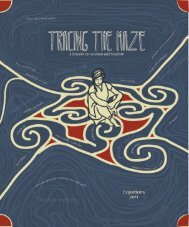Nilgiris Biosphere Reserve - Equitable Tourism Options
Nilgiris Biosphere Reserve - Equitable Tourism Options
Nilgiris Biosphere Reserve - Equitable Tourism Options
You also want an ePaper? Increase the reach of your titles
YUMPU automatically turns print PDFs into web optimized ePapers that Google loves.
livelihood and have been absorbed as cheap and exploitable daily wage<br />
labour in the nearby coffee plantations. Some of them are employed by the<br />
Forest Department for the upkeep of the Park. However this employment is<br />
seasonal.<br />
Genesis of conflicts: the declaration of National Park<br />
Two decades ago non-adivasis had commenced encroachment and have<br />
managed to get title deeds for about 250 acres. The outrightly colonial<br />
Wildlife (Protection) Act, 1972 provides for the extinguishing of all rights of<br />
local inhabitants in National Park, in effect prohibiting habitation itself with<br />
the resultant eviction. Since 1963, the Adivasis living in the core area have<br />
been systematically pushed to the fringes. In the 1970s about 900 families<br />
and in the 1980s about 320 families from various villages have been pushed<br />
out to locations ranging from 1 km to 12 kms. Without any compensation,<br />
they have been reduced to living in ghettos, of which some are government<br />
sponsored, and restricted from their ancestral lands. Before 1972, the<br />
people were exploited and were forced to become labourers for the Forest<br />
Dept. Since 1972, around 6000 people have been pushed out and the<br />
remaining are being seen as encroachers. They have become labourers in<br />
estates. Their lands have forcibly been prevented from cultivation and<br />
instead planted with teak, bamboo and eucalyptus. Trenches have been dug<br />
up by officials cutting across their fields and paths, constantly harassed for<br />
utilising forest resources for meeting their basic needs, denied of<br />
development programmes, etc resulting in hunger deaths and malnutrition.<br />
They are also blamed for death of wildlife, constant destruction of the<br />
protective fences for their crops, planned trampling of cultivated crops by<br />
domesticated elephants. The adivasis, especially the women, have had to<br />
face a number of atrocities by the forest officials. They have been molested,<br />
harassed, beaten and locked up in the name of forest offences.<br />
Genesis of conflicts: India Eco-Development Project<br />
India signed the Biodiversity Convention at Rio in 1993. As part of the<br />
convention the Global Environmental Facility (GEF) was set up. India's<br />
biological resources are considered 'economically' important both globally<br />
and nationally by the World Bank.The importance attached to these natural<br />
resources has prompted the World Bank to aid a Rs. 294.9 crore project. The<br />
Eco-development project in seven 'protected areas' i.e. sanctuaries and<br />
national parks, from all over India was to commence in January 1997<br />
31 Nililgiris : F IJI/ing Glory


